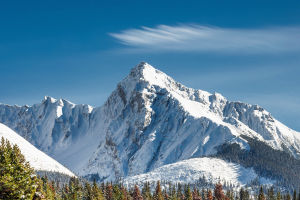The twenty-first century is often referred to as the "century of the sea".
Sea transport is currently the most important means of international trade and transportation of goods, while the sea also serves as a crucial source of food, with abundant fishery resources and the potential for developing "sea pastures" in the future.
However, the distribution of fishery resources in the ocean is uneven, with a concentration in certain areas. These areas, where marine fishery resources are particularly rich, are known as "fishing grounds".
There are four traditionally famous fishing grounds in the world, known as the "world's four major fishing grounds": the Hokkaido fishing grounds, the North Sea fishing grounds, the Newfoundland fishing grounds, and the Peruvian fishing grounds.
1. Hokkaido Fishing Grounds
The Hokkaido fishing grounds are located in the eastern part of Asia, near the Japanese island of Hokkaido, where the warm Japanese current and the cold Thousand Islands current meet. The difference in seawater density causes the cold water, with high density, to sink and the warm water, with low density, to rise, stirring seawater vertically and bringing organic matter from the sea floor to the surface, providing rich bait for fish.
Moreover, the convergence of cold and warm currents creates a "water barrier", to some extent impeding the mobility of non-migratory fish. Due to the technological advancement of the fishing industry and the continuous development of aquaculture fisheries, this area has become one of the largest fishing grounds worldwide.
The seawater around Hokkaido is rare and unpolluted, and Hokkaido, surrounded by the sea, is a treasure trove of fish. After the cold current sinks below the warm water layer, the "tidal realm" between its leading edge and the Kuroshio is extremely rich in fish bait, making it a world-renowned fishing ground. The main fishery species include salmon, pollock, Pacific herring, swordfish, and Far Eastern sardines.
2. Peruvian Fishing Grounds
Unlike the other three fishing grounds, which are formed by the convergence of cold and warm currents, the Peruvian cold current is a rising cold current, and seawater moves from the bottom to the surface in the vertical direction. Therefore, the upward compensating current prevailing along the coast of Peru has formed one of the four major fishing grounds in the world, the Peruvian fishing grounds.
3. North Sea Fishing Ground
The North Sea fishing grounds are formed by the convergence of the North Atlantic warm current and the East Greenland cold current, where the cold and warm currents meet and converge to produce a surge current.
Seawater in the surge current area constantly surges from the lower layer to the surface layer, bringing decomposed organic matter and other nutrients from the lower layer of the seawater to the surface layer. As a result, the water in this sea area is fertile and forms a highly productive fishing area in the North Sea. It is one of the four major fishing areas in the world, producing a wide variety of fish, mainly herring, mackerel, and cod.
4. Newfoundland Fishery
The Newfoundland fishing grounds, located off the coast of Newfoundland, were once one of the four major fishing grounds in the world, formed by the confluence of the Labrador Cold Current and the Gulf of Mexico Warm Current in the waters around Newfoundland.
In 1992, the Canadian government was forced to impose a fishing ban on the Newfoundland fishery. This put Newfoundland's number one fishing industry, which had been operating for nearly 500 years, out of business and left nearly 40,000 fishermen unemployed. However, 11 years after the ban was imposed in 2003, Newfoundland's waters were still dead and the seemingly inexhaustible supply of cod was nowhere to be found.
The main species in Newfoundland's fisheries used to be cod, but after nearly 100 years of overfishing, the cod ecosystem has been damaged and is extremely difficult to restore. There are also salmon, bonito, striped bass, herring, swordfish, plaice, shark, yellowtail, squid, and tuna.


